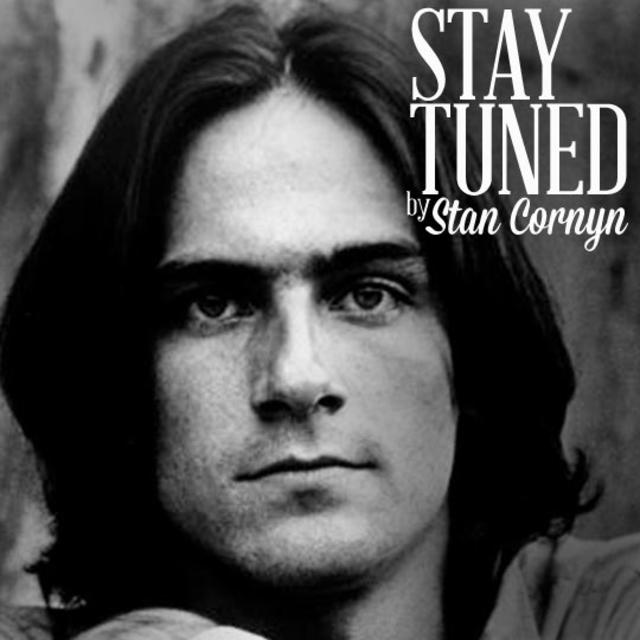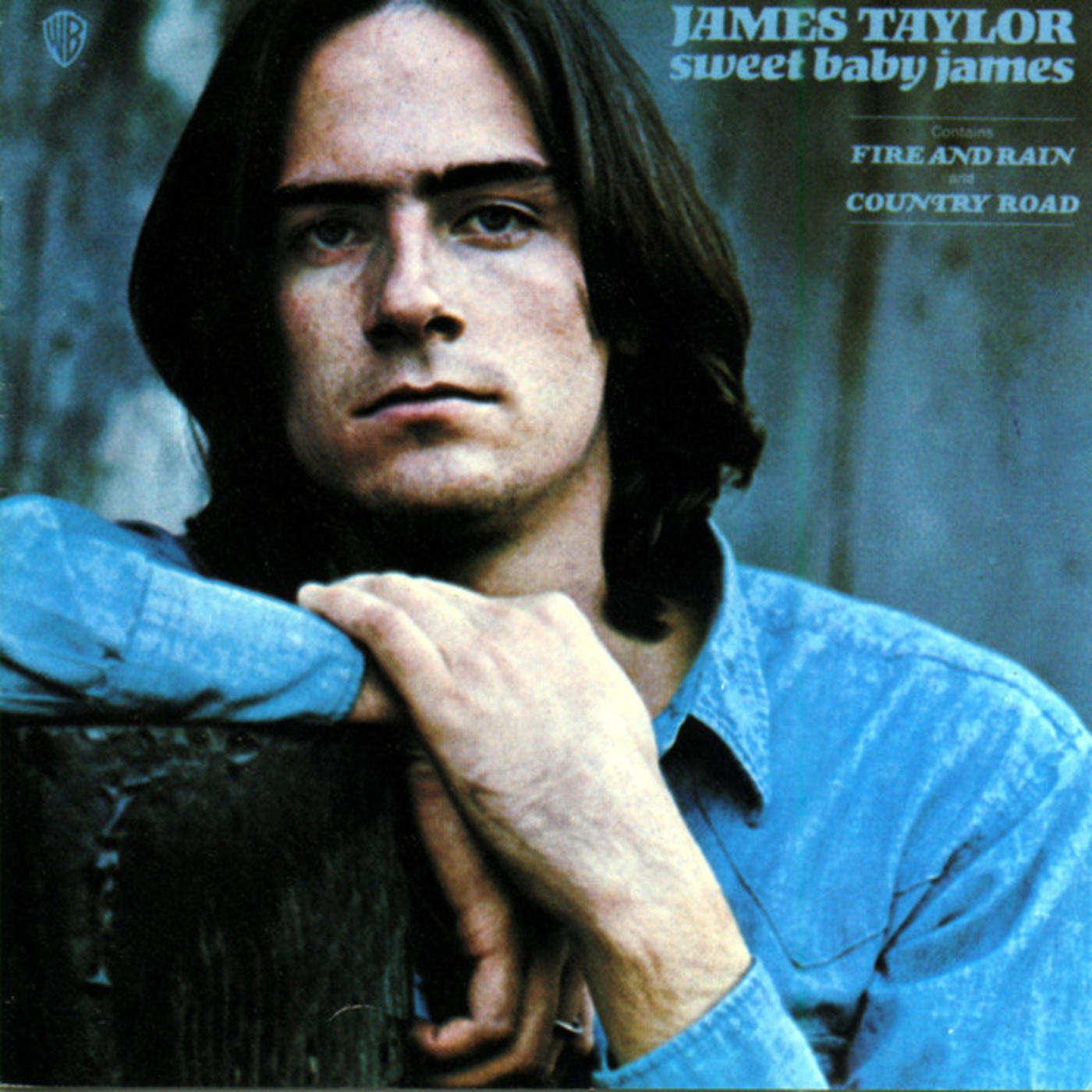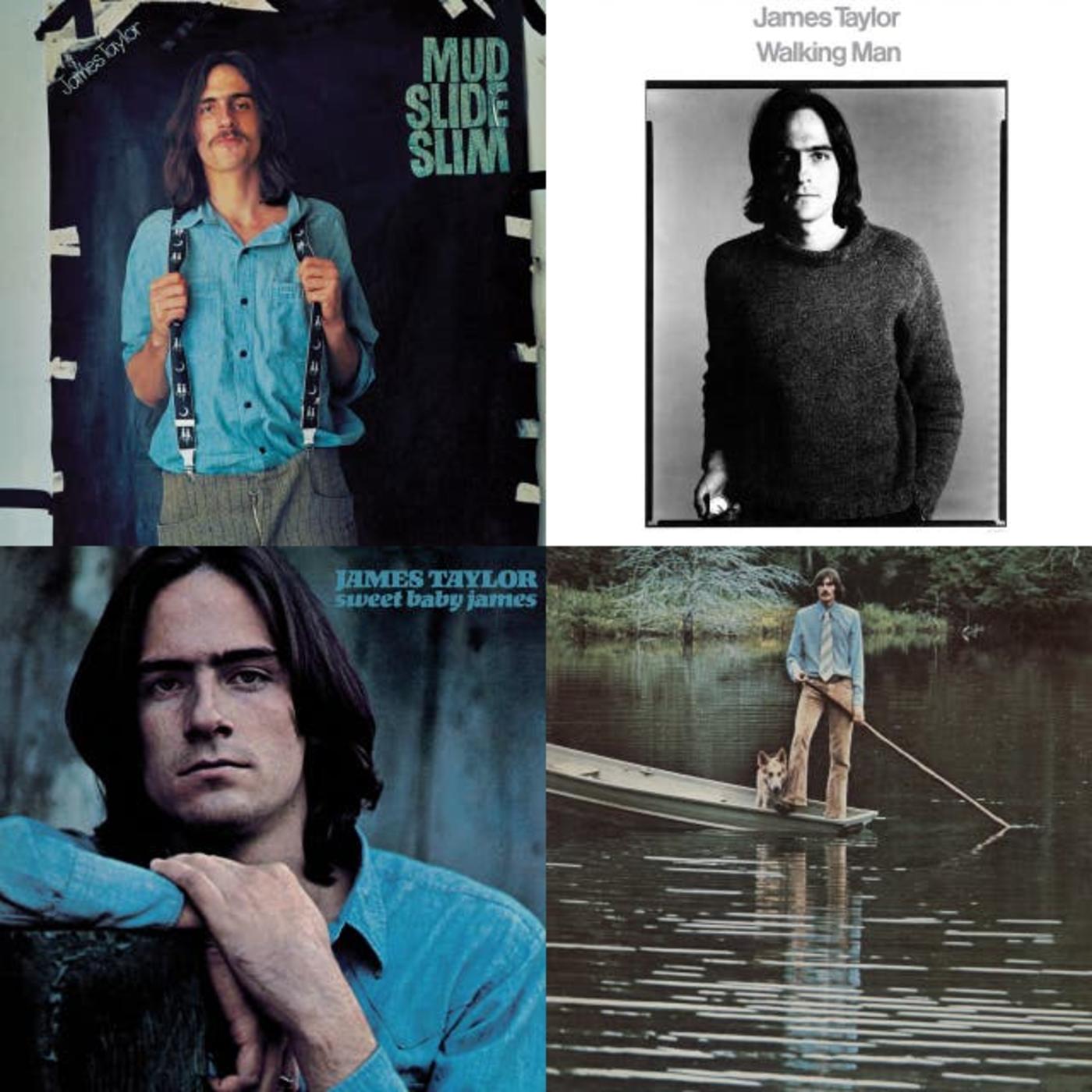Stay Tuned By Stan Cornyn: Sweet And Sour

Every Tuesday and Thursday, former Warner Bros. Records executive and industry insider Stan Cornyn ruminates on the past, present, and future of the music business.
Within Warner Bros. Records, a most handsome, most likeable, impressively tall singer-songwriter had just joined the Artist Roster. If this man came into your office, it was like Cary Grant or George Clooney came to visit you.
This man had a voice that melted its listeners. He wrote his own songs.
He was heterosexual, single, and eligible.
He was, as he got known to be, a very Sweet Baby.
We loved our Sweet Baby.
Where Sweet Baby James Came From
Born in 1948, James Taylor had started life up Chapel Hill, North Carolina, a dulcet, rural area which James recalled as “beautiful, but quiet.” There, he’d grown up involved emotionally in folk music. He played guitar or banjo, not piano. As an adolescent, he felt alienated from people. His best friend was his guitar. He wrote songs and played them, just he and his strummer. Folk songs, like Woody Guthrie’s.
Family summers in Martha’s Vineyard. Later, when he’d reached college age, however, drug-taking had captured him. He now slept and slept, twenty hours a day. He felt that life was “just too hard to lead.” He checked into a hospital in Massachusetts.
He felt total self-doubt.
He was part of the age when drugs were fashionable, and he got into them. More and more. He became a heroine addict. During his teens he’d spent long spells in two mental institutions in Massachusetts.
(During this early drugs era, Taylor wrote several songs about the feeling: “Knocking ‘Round the Zoo,” “The Blues Is Just a Bad Dream,” “Don’t Talk Now,” and “Rainy Day Man.”)
There's winds out on the ocean,
they're blowing just as they choose.
But then winds ain't got no emotion, baby,
they don't know the blues.
They say the blues is just a bad dream,
they say it lives upside your head, mmmm.
But when it's lone, lonely in the morning
you're bound to wish that you was lying dead.
And…
It looks like another fall.
Your good friends they don't seem to help at all.
Now, when you're feeling kind of cold and small,
Just look up your rainy day man,
All I'm asking just to look up your rainy day man.
Post-college, James moved to New York, to the Village. Heroine was easy to find, and he found. Easy to find as a drink in a bar. His father rescued him, and six months more followed in a hospital.
James’ First Love
But James wanted his best friend: music. In 1967, he moved to London. There he recorded some demos, and got them to Peter Asher, then A&R head of the new Beatles business, Apple Records. He got signed to Apple, and that quick, he became part of the world’s biggest music rage, and even had George Harrison sing part of “Carolina in My Mind.”
In my mind I'm gone to Carolina Can't you see the sunshine? Can't you just feel the moonshine? And, ain't it just like a friend of mine To hit me from behind? Yes, I'm gone to Carolina in my mind
More drugs. Apple released his debut album James Taylor, and Rolling Stone’s review (Jon Landau) wrote “this album is the coolest breath of fresh air I’ve inhaled in a good long while. It knocks me out.”
But Apple Records as a business imploded. Business-toughie Allen Klein was brought in to fix it all. Peter Asher quickly resigned, with one proviso: he got to manage James Taylor.
James and Peter came to America, and in 1969 did six nights at Los Angeles’ Troubadour, then, in July, was the closing act at the Newport Folk Festival, cheered by fans who stayed in the rain to hear him. At Newport, Warners’ Joe Smith had watched, as James, stoned, lurched around the festival grounds. But Joe heard him, too.
By October, 1969, Asher and Smith had met, and signed James to Warner Bros. Records. To Asher it was the right label; Warners had Joni and Neil. It leaned toward the young, free-thinker crowd. Good place for James.
James was not cured of drugs, but musically he felt free now.
Living in L.A., he’d aligned with the Laurel Canyon music group, and especially with another song writer, Carole King. She became James’ earth mother, and her album Tapestry whispered to James that Laurel Canyon songs could care. “You’ve Got a Friend” was hers, and indeed he did.
You just call out my name, and you know where ever I am
I'll come running to see you again.
Winter, spring, summer, or fall, all you have to do is call,
Lord, I'll be there, yeah, yeah,
you've got a friend.
You've got a friend.
Ain't it good to know you've got a friend.
Ain't it good to know you've got a friend.
Oh, yeah, yeah, you've got a friend.
James Taylor’s first Warner album, Sweet Baby James, fit not only Laurel Canyon, but provided musical relief from a world grown bitter over Viet Nam. James’ voice was unique: he didn’t scream or bang, but his “Fire and Rain” mirrored his life: deep depression. But in person, he still seemed …. mellow.
He sang of his life:
Oh, I've seen fire and I've seen rain
I've seen sunny days that I thought would never end
I've seen lonely times when I could not find a friend
But I always thought that I'd see you, baby, one more time again, now
Now with Warners, that first album sold amazingly. Over three million copies just in America. It got regarded as a “folk-rock masterpiece.” 3,000,000 is a big number to sell, first time out.
How big was James now? Really? Even at Warner Bros. Records, we fell into shock, when…
TIME Changes Folk
While James was recording his second album, Time magazine’s March 1, 1971, came out with James, there BIG on its cover.
Warner staffers felt astonished that their soft singing hero-guy, who’d just escaped from Laurel Canyon, had according to big-city Time with one album turned the music world on its ear, had changed our “young artists” world. How they said our sweet guy had reformed rock as “bittersweet and low.”
This one bold magazine statement marked (to me at least) the end of this “new music” crowd being referred to as “underground,” and made obsolete our getting reviews in tiny weekly newspapers you could get for free on Friday. Fringe had become popular, Time reported.
Was this really the new pop music?
Time answered: “Taylor’s use of elemental imagery – darkness and sunlight, references to roads traveled and untraveled, to fears spoken and left unsaid – reaches a level both of intimacy and controlled emotion rarely achieved in purely pop music.”
The next month, out came James’ second Warner LP: Mud Slide Slim and the Blue Horizon. In it was James’ own version of Carole King’s “You’ve Got a Friend” (with backup voice of Joni Mitchell, too).
You just call out my name, and you know where ever I am
I'll come running to see you again.
Winter, spring, summer, or fall,
all you have to do is call and I'll be there,
yeah, yeah,
you've got a friend.
In Laurel Canyon, Joni had fallen for James. They were a couple, for now. But, as Joni depicted in her next album, Blue, living with James and his addiction(s) bedeviled her. She wrote deeply about it. Looking back, she recalled, “I was at my most defenseless during the making of Blue. I broke down, but I continued to work.” Then she moved to a new home in Vancouver.
When she returned to California, Joni brought with her new songs that portrayed how living with James had been: “Cold Blue Steel and Sweet Fire” and “Blonde in the Bleachers.”
She tapes her regrets
To the microphone stand
She says, “You can’t hold the hand
Of a Rock’n’Roll man
Very long
Or count on your plans
With a Rock’n’Roll man
Very long
Compete with the fans
For your Rock’n’Roll man
For very long
The girls and the bands
For very long
The girls and the bands
And the Rock’n’Roll man”
In Burbank, Warner executives winced at Joni’s messages. But James, he’d moved on.
Then Along Comes Carly
Another “girl singer” had caught his ear and eye.
Carly Simon was in L.A., and on April 6 of ’71 she opened for Cat Stevens at the Troubadour. She’d been signed to Elektra the year before. For opening night, her label had (in her name) put roses on every table in the Troub.
After Carly’s set, James Taylor came backstage, for their first meeting. 'He just sat in the corner with these big corduroys on. His hair was kind of long and he was very shy,' she has said of their first meeting.
James had been in a relationship with Joni, so it took six months before he and Carly began dating.
They began. And they married on Nov. 3 of ‘72, in her swank apartment in Manhattan. Their marriage lasted until 1983, and produced two children. They became pop music’s reigning royal couple. Carly Simon recalled their marriage as “life-in-a-fishbowl.”
Warner’s Biggest Hitter
In the coming seasons, James stayed sweet. He and his team created hit after hit. More than any other artist on the label (by back then).
One Man Dog, with “Don’t Let Me Be Sleepy Tonight” (1972)
Walking Man (1974)
Gorilla, with “Mexico” and “How Sweet It Is” (1975)
In the Pocket (1976)
Then, The Worst Ever Phone Call
By 1976, James Taylor had created six albums for Warner Bros. Records, and was totally “family.” A favorite son. Employees didn’t bump into James much, and often he lived in Manhattan at an apartment in the San Remo with Carly.
But all those six albums had all reach at least Top Twenty, and almost as often, Top Five.
By 1976, Mo Ostin was the head man at WBR. His phone rang. The message he got was short and sour: “Columbia Records is signing James Taylor,” he told us.
Hard to believe. Talent like James’, they yearned to be signed to Warners. We’d never before been walked out on.
Mo quickly called James’ manager (still), Peter Asher. No help there; this deal was made without him.
Mo was hurt. He gathered a few co-workers -- Lenny Waronker and A&R hot producer Ted Templeman (who’d just produced Carly’s album Another Passenger), and, with Peter Asher – all James and Carly buddies -- they all flew back to New York. At the San Remo, they faced their baby James. With Mrs. Taylor present, they talked and talked, until 4 in the morning, all presenting the Warner case.
It did not work. After all that talk, James Taylor rolled up into a ball and started to cry; he never wanted to hurt a soul, let along his label. But he and Carly wanted Columbia, with its multi-million dollar deal offered by Columbia’s Walter Yetnikoff.
Mo could not believe his appeal had not worked with his James.
Back home, Mo’s shock at being abandoned for another label turned into anger. He heard that Yetnikoff had met with Bonnie Raitt, and written a seductive dollar amount on a napkin.
“Well, we’ll show them,” the Warner gang decided. Plans got drawn up.
-- Stay Tuned
Where Are They Now:
Joni Mitchell – Born in 1943. Beyond her active life and encounters in Laurel Canyon, Joni next moved into works with jazz musicians like Herbie Hancock and Charles Mingus; and into electronic music. She actively took up political protest. Any albums she made were self-produced, including their cover art (she equally has a career in painting). She has remained an outspoken critic of the music industry, but stopped making albums with #17, released in 2007. She has one daughter from an early relationship back in her home in Canada.
Carly Simon – In 1980, she moved from Elektra to, of all places, Warner Bros. Records, where she recorded three albums: Come Upstairs; Torch; and Hello Big Man. In 1983, she and James divorced and she moved to other labels, first (in 1985) to Columbia’s Epic label, for her album Spoiled Girl. She remarried (outside the music business) for 20 years, then re-divorced. She now lives in Martha’s Vineyard, a grandmother.
James Taylor – He’s on his third marriage, having second married actress Kathryn Walker (1982-96), then Kim Smedvig. During his career, he’s said to have sold 33,000,000 records, and for the last 25 years he’s stayed on Columbia Records. He now lives in Berkshire County, Massachusetts, and is politically active in liberal causes. And drug-free for decades now.
Carole King – After a major career/marriage with song writing partner Gerry Goffin (1960-1968), Carole moved to Laurel Canyon with their two daughters. Two more marriages, while Carole continued to write hit songs, and to perform them herself. In 1977, she moved to a tiny mountain town in Idaho. In 2010, she collaborated with James Taylor in creating The Troubadour Tour and album. Her 400 songs have been recorded by more than 1000 artists.
Peter Asher – Lives with his wife Wendy in Malibu, and still works at talent management, for both James Taylor and Linda Ronstadt. When asked what he liked most about performing rock on stage (which he did as Peter & Gordon in the early ‘60s) he said, thoughtfully, that the greatest pleasure in all that was "screaming fans trying to tear our clothes off—an unmitigated pleasure. I recommend it.”


